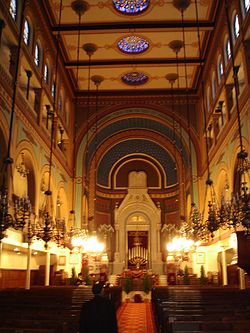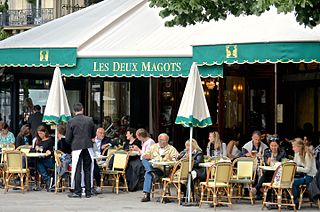
The 6th arrondissement of Paris is one of the 20 arrondissements of the capital city of France. In spoken French, it is referred to as le sixième.
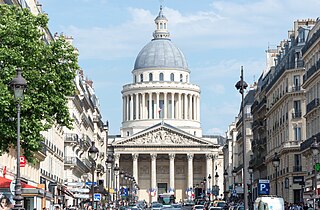
The 5th arrondissement of Paris is one of the 20 arrondissements of the capital city of France. In spoken French, this arrondissement is referred to as le cinquième.

The 4th arrondissement of Paris is one of the twenty arrondissements of the capital city of France. In spoken French, this arrondissement is referred to as quatrième. Along with the 1st, 2nd and 3rd arrondissements, it is in the first sector of Paris, which maintains a single local government rather than four separate ones.
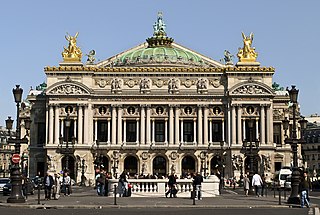
The 9th arrondissement of Paris is one of the 20 arrondissements of the capital city of France. In spoken French, it is referred to as le neuvième.

Communauté Juive Libérale d'Île-de-France (CJL) is a Jewish community led by the Rabbi Pauline Bebe, the first woman rabbi in France. The community belongs to the Reform movement. The CJL is part of the World Union for Progressive Judaism which unites more than 1000 communities worldwide.

The Collège Stanislas de Paris, colloquially known as Stan, is a private Catholic school in Paris, situated on "Rue Notre-Dame-des-Champs" in the 6th arrondissement. It has more than 3,000 students, from preschool to classes préparatoires, and is the largest private school in France. Stanislas is considered one of the most prestigious and elite French schools. The school was ranked 1st from 2019 to 2022 for middle school and 1st in 2019 for high school.
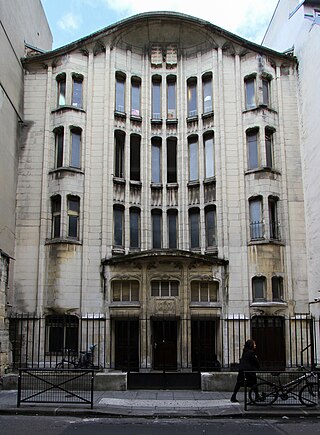
The Agoudas Hakehilos Synagogue, at 10 rue Pavée, in the 4th arrondissement of Paris, commonly referred to at the Pavée synagogue, rue Pavée synagogue, or Guimard synagogue, was designed by Art Nouveau architect Hector Guimard and erected between 1913 and 1914.
David Feuerwerker was a French Jewish rabbi and professor of Jewish history who was effective in the resistance to German occupation the Second World War. He was completely unsuspected until six months before the war ended, when he fled to Switzerland and his wife and baby went underground in France. The French government cited him for his bravery with several awards. After the war, he and his wife re-established the Jewish community of Lyon. He settled in Paris, teaching at the Sorbonne. In 1966, he and his family, grown to six children, moved to Montreal, where he developed a department of Jewish studies at the University of Montreal.

Located at 6, rue Notre-Dame-des-Victoires, in the 2nd arrondissement of Paris, The Basilica of Notre-Dame-des-Victoires is one of ten minor basilicas located in the Île-de-France region of France. It was begun as an Abbey church, and constructed between 1629 and 1740 in the French classical style. Its name was given by King Louis XIII, who dedicated it to his victory over the Protestants at La Rochelle in 1628 during the French Wars of Religion. Notre-Dame-des-Victoires is famous for the ex voto offerings left there by the faithful. Over 37,000 devotional plaques, silver and gold hearts, as well as military decorations, have been left at the basilica. The closest Métro station is 'Bourse'.

Jean Beausire was an architect, engineer and fountain-maker and the chief of public works in Paris for King Louis XIV of France and King Louis XV of France between 1684 and 1740, and was the architect of all the public fountains constructed in Paris that period. Several of his fountains still exist and continue to work. Three streets in the 4th arrondissement of Paris today carry his name: Rue Jean-Beausire, Impasse Jean-Beausire, and Passage Jean-Beausire.

The Grande synagogue de Lyon is a synagogue located at 13 quai Tilsitt in the 2nd arrondissement of Lyon. This neo-Byzantine Jewish place of worship was built between 1863 and 1864 and renovated for the first time in 2014. It was classified as a monument historique in 1984.
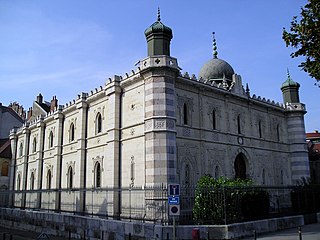
The beginnings of the history of the Jews in Besançon go back to the Middle Ages, a period during which the Jews settled in the city attracted by its activity as a commercial place. The community was founded at the end of the 14th century and, due to its status as a free imperial city, Besançon remained one of the only territories in present-day France to tolerate Jews after their expulsion from the kingdom of France in 1394. The community was nevertheless expelled in turn from Besançon in the middle of the 15th century. The Jews made a tentative return to the city in the 18th century, but it was only after the French Revolution, which emancipated them, that their situation in the Franche-Comté capital stabilized. Although the Jewish community never exceeded 2,000 people except on the eve of the Second World War, it experienced great economic success during the industrial revolution at the end of the 19th century, when the Lipmann family founded LIP, a brand of watchmaking which then became one of the economic engines of the region and remained associated with the name of the city.

Music in the city of Paris, France, includes a variety of genres, from opera and symphonic music to musical theater, jazz, rock, rap, hip-hop, the traditional Bal-musette and gypsy jazz, and every variety of world music, particularly music from Africa and North Africa. such as the Algerian-born music known as Raï. Leading musical institutions include the Paris Opera, the Orchestre de Paris, and the Paris Conservatory, the first state music conservatory in Europe. The Cité de la Musique at La Villette is home of the new Paris Symphony Hall, the Conservatory, a museum of musical instruments, and Le Zenith, a major venue for popular music. Many of the churches in Paris have magnificent historic organs, and often host concerts. The city is also known for its music halls and clubs.
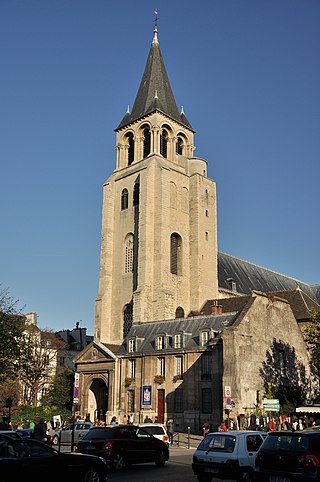
The city of Paris has notable examples of architecture of every period, from the Middle Ages to the 21st century. It was the birthplace of the Gothic style, and has important monuments of the French Renaissance, Classical revival, the Flamboyant style of the reign of Napoleon III, the Belle Époque, and the Art Nouveau style. The great Exposition Universelle (1889) and 1900 added Paris landmarks, including the Eiffel Tower and Grand Palais. In the 20th century, the Art Deco style of architecture first appeared in Paris, and Paris architects also influenced the postmodern architecture of the second half of the century.

Notre-Dame-de-la-Salette is a Roman Catholic church located rue de Cronstadt in the 15th arrondissement of Paris. It is under the patronage of Our Lady of La Salette, particularly revered by the religious congregation of St. Vincent de Paul.
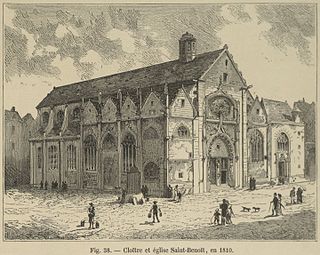
Saint-Benoît-le-Bétourné was a church in Paris. Originally dedicated to the martyrs Sergius and Bacchus, it was founded in the 6th century on rue Saint-Jacques · in what is now the 5th arrondissement of Paris. It was demolished in 1831 to build the théâtre du Panthéon, which was itself demolished in 1854 to build rue des Écoles.
The Israelite Seminary of France also known as the Central Rabbinical School of France , is a Rabbinical school that trains Orthodox rabbis in France. Founded in Metz in 1829 as the Central Rabbinical School of Metz, it moved to Paris in 1859, where it is based in the city's 5th arrondissement. The school is connected with the Israelite Central Consistory of France, one of the major bodies of Orthodox Judaism in France.

The Luxembourg Synagogue is an Orthodox Jewish synagogue, located on Avenue Monterey, in Luxembourg City, Luxembourg.

On the night of October 2–3, 1941, six synagogues were attacked in Paris and damaged by explosive devices places by their doors between 2:05 and 4:05 am. The perpetrators were identified but not arrested.

